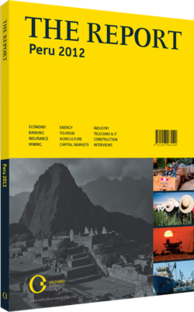OBG talks to Juan Manuel Santos, President of Colombia

Interview: Juan Manuel Santos
What measures are you taking to attract investors?
JUAN MANUEL SANTOS: Economic, political and social stability are key factors in determining the investment climate. Clear legislation with stable regulations is equally important.
Developing a favourable investment climate has been one of the most important public policy goals in Colombia over the last decade, and has been carried out by implementing tax incentives for investment, reducing paperwork, simplifying formalities, undertaking promotional activities and increasing security for investors. Thanks to this comprehensive approach, Colombia went from receiving $2.1bn in foreign direct investment in 2002 to more than $15bn in 2011.
Colombia offers investors a robust network of international investment treaties that provide a favourable, fair and stable framework for foreign investment.
How does Colombia expect to position itself in South America over the next few years?
SANTOS: Colombia’s economy has its own specific gravity, not only because of its strategic location, but because the size of its market, its resource endowment, productive structure and pro-globalisation attitude. In this context, Colombia expects to position itself as a leader in regional integration, embracing surrounding nations regardless of their size. It is crucial to take advantage of our FTAs and to increase intra-industry trade as a way of advancing towards a higher-value-added production. By negotiating flexible rules of origin, we have opened the door to productive alliances between companies from different countries to direct regional products to foreign markets.
In what ways will free trade agreements (FTAs) change the basis of the Colombian economy?
SANTOS: We anticipate additional GDP growth through FTAs of 0.46%, along with an increase in exports of more than 0.7%. Through these agreements, we have gained greater access to service areas of interest for Colombia, such as consulting services and call centres. This will encourage Colombian entrepreneurs and businesses to strengthen exports even more. At the same time, local industries will benefit from the gradual elimination of import tariffs on raw materials and inputs, as well as machinery and high-tech equipment, thus enabling them to become increasingly efficient and competitive in their production processes.
What are your expectations of the FTA between Colombia, Peru and the EU?
SANTOS: The agreement will ensure stability, transparency and certainty of access for our exports to a market of nearly 500m people, the biggest importer of goods and services in the world, with a per capita income exceeding $32,000. Additionally, on public procurement matters, Colombian businesses will have access to all European bodies at the central and subcentral levels, as well as to independent companies and entities of the 27 member countries of the EU.
The potential is enormous and we are encouraging our businessmen and businesswomen to set their sights on this huge market with high purchasing power, and to focus on producing and selling goods and services with high demand levels in the European market.
Will stronger ties with Peru make both economies more resilient to external financial shocks?
SANTOS: It is difficult for any economy to be fully resilient to external financial shocks, and their levels of resilience obviously depends on the degree of each country’s exposure to “contaminated” securities. For example, in the 2008-09 economic crisis, damage depended on the volume of sub-prime mortgages or their derivatives held by institutional investors such as pension funds and banks. In the current case it would depend on the volume of sovereign bonds from the economies facing the greatest problems being held by the respective financial entities in Peru and Colombia. In both cases, however, the current exposure is minimal, and a shock via financial channels seems unlikely.
The greatest risk our economies currently face is linked to foreign trade. Despite the fact that we have diversified our foreign markets, the US and the EU are still very important trade partners for Peru and Colombia. In this case, the resilience of our economies lies in the foundations supporting our economic growth, and on having healthy macroeconomic policies. Peru and Colombia have shown strong macroeconomic performances and our foundations are solid. Both economies have inflation under control, public finances are on the right path and foreign trade has strengthened. In this context, the deepening of the integration and the strengthening of bilateral relationships should help in the mitigation of foreign impacts.
Which sectors possess the greatest potential to develop downstream industries?
SANTOS: There are five “macro” sectors we have identified as “locomotives” or driving forces for growth and job creation in Colombia. They are: innovation-based sectors; agriculture, livestock and rural development; transport infrastructure; mining development and power generation expansion; and housing construction.
Thanks to joint cooperation between the public and private sectors, we created a Productive Transformation Programme (PTP), which has been recognised internationally as an example of an innovative way to transform strategic, new and consolidated sectors into top global market players based on the linkage of productive chains and contribute to Colombia’s competitiveness. Among the 16 sectors included in the PTP are information technology, eco-tourism, horticulture, dairy, power generation, and oils and bio-fuels.
What is happening to produce more value-added goods and to promote research and development?
SANTOS: The purpose behind PTP is precisely to encourage the production of more value-added goods and innovative services where our country has shown proven strengths. We plan to move towards an innovation-based economy, showing our commitment by allocating 10% of royalties generated by the mining and oil sectors towards encouraging innovative ideas.
The new national royalty system created the Science, Technology and Innovation Fund, which will have at its disposal approximately $350m in 2012, and whose purpose is to boost Colombia’s scientific, technological, innovative and competitive capabilities. Furthermore, tax benefits have been put in place for educational institutions and research centres, and for investments in technological research and development. In 2011, a total of 175 projects were approved under this programme, amounting to more than $120m.
Project financing through private capital funds helps prioritise innovative ventures with high growth potential, featuring higher-value-added products or services. Those funds have at their disposal aggregate funding resources that amount to nearly $2.2bn.
What regulatory and infrastructural improvements are necessary to further increase cooperation between Colombia and Peru?
SANTOS: We have been working with Peru on three fronts: cooperation, regulation and infrastructure to take advantage of our free trade agreements. We share best practices and information for negotiations with third countries. Additionally, we have cooperated in trade facilitation mechanisms such as the one-stop foreign trade window/counter and the joint leveraging of cooperation resources from the EU.
Regarding infrastructure, we are anticipating joint efforts on border projects, such as the navigability of the Amazon River and bi-national transport connections, as well as on an electricity interconnection project also involving Ecuador and Chile. On regulatory matters, in the Andean Community and the Pacific Alliance initiative – of which Colombia and Peru are part – we have been working together on policy coordination, institutional adjustments, sanitary measures and the regulation of trade in services and investments.
You have reached the limit of premium articles you can view for free.
Choose from the options below to purchase print or digital editions of our Reports. You can also purchase a website subscription giving you unlimited access to all of our Reports online for 12 months.
If you have already purchased this Report or have a website subscription, please login to continue.

